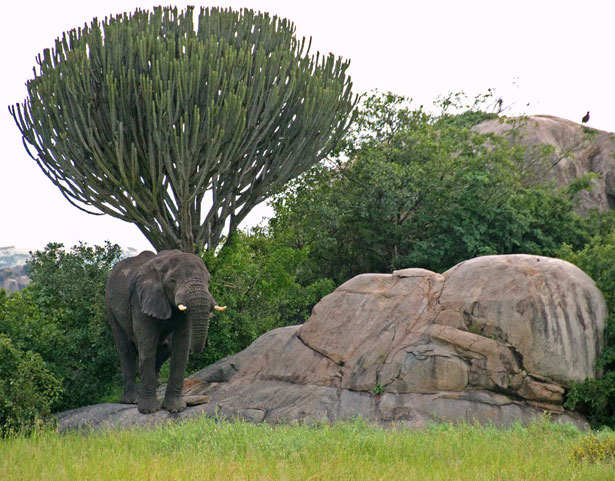The Serengeti National Park is located in Tanzania on
eastern side of the African continent, between the Tropic of Capricorn and the
Equator. The region was originally created by the lava flows of volcanoes found
on the park, as well as surrounding volcanoes. The lava caused the land over
the already existing granite to rise, as well as created a cooler climate than
one would expect with the park being so close to the Equator.
The only active
volcano in the Serengeti National Park is the Ol Doinyo Lengai, and the last
eruption was in 1983. This volcano is a stratovolcano and produces
natrocarbonatite lava, which has the lowest viscosity of any lava and is very
high in sodium; this is the only active volcano to produce this type of lava. This
lava hardens very quickly once it hits the surface, and the temperature drops
so rapidly that a spoon can be used to scoop it up. The tiny drops of lava that
spew from the vents harden so rapidly they are completely solidified within seconds
and shatter upon hitting the ground.
 |
| Ol Doinyo Lengai |
The most common rocks seen here are called kopjes, and they
are giant rocks made of granite that used to be the tops of various mountains
that were buried by volcanic ash and lava flow.
 | |
| An elephant standing on a kopje in the Serengeti National Park. |
There are two lakes found in the park; Lake Lagaja and Lake
Magadi. Both are saline lakes, meaning they have high levels of salt contained
within the water. This can be due to volcanic ash, mineral springs, or both.
 | ||||
| Lake Magadi in Tanzania within the park. |
As for affecting people, this area has not been inhabited by
humans since the late 1800’s when the cattle were killed off due to a disease
known as Rinderpest, thus leaving the lions only humans to hunt, causing them
to vacate. The region was turned into a national park in 1929.
Sources for photos and information found at:
sensesofwildness.com
gorp.com
nationalgeographic.com
publicdomainpictures.com
bioexploration.com
kids.britannica.com
No comments:
Post a Comment